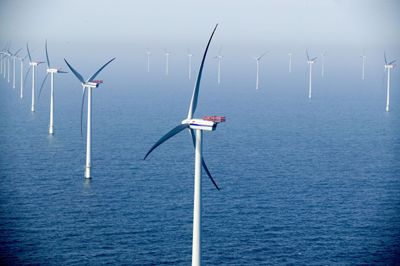by Larry
January, 2015Bucks From Yucks
$5-10 a ton may not seem like much, but it is usually a bonus on top of an already profitable business. For example, farmers in OR are getting paid for the electricity they generate by burning methane collected from huge ponds of liquid manure from dairy cattle. In addition to that, they sell their carbon reduction credits (for the methane used to make energy instead of it going into the air, where it tends to greatly add to the greenhouse effect) to companies like power plant operators who are required to cut greenhouse gas pollution by 25% in the next decade.
Further, some states, such as CA, have instituted their own carbon cap-and-trade programs. Going concerns that trade their carbon offset credits there need not necessarily be profitable in themselves but can still get the credit for officially lowering atmospheric carbon dioxide or methane. For instance, a community forest in northern CA creates verified lowering of carbon dioxide and so offset credits for the community (Arcata City), and the credits can then be sold to polluters. There are now a host of green energy projects springing up. Some have already done exceptionally well. Various ones help folks merely earn a modest living or supplement other primary sources of income. Others, of course, will ultimately not work out. The field appears to be wide open, though, and your next creative idea could be the one that thrusts you into millionaire status. Along with dairy cattle manure to methane electricity production and forests sustained (instead of that land being developed) to absorb carbon dioxide, here are a few of the multiple ideas folks have come up with for profitable carbon gases curtailment and selling of offset credits:
There is no guarantee of riches from helping to improve our environment, but there are today more ways than ever before to capitalize on going green. Some of the entrepreneurs who try out their creativity and smarts on such ventures will become wealthy doing so. Many others will at least gain extra income. Might you be one of them? Primary sources: Entrepreneurs Find Ways To Make Money From Carbon Emissions. Christopher Joyce on NPR; January 5, 2015; How Carbon Capture Technology Is Turning CO2 into Cash. David Russell Schilling in Industry Tap; July 29, 2013; The Energy Frontier: Expander's Quest To Turn Carbon Into Cash. Claudia Cattaneo in Financial Post; July 25, 2013; Turning Carbon Into Cash. in iseek; last updated in July, 2009. |
 The big polluters hardly get off that easily, however. They can reduce their companies' carbon footprints via such offsets but only for up to 8% of their overall lowering of carbon emissions. So carbon offset trades really just give such enterprises a chance to jump start their greenhouse gas emission cutbacks, the bulk of which will still require major changes in how they create power.
The big polluters hardly get off that easily, however. They can reduce their companies' carbon footprints via such offsets but only for up to 8% of their overall lowering of carbon emissions. So carbon offset trades really just give such enterprises a chance to jump start their greenhouse gas emission cutbacks, the bulk of which will still require major changes in how they create power.